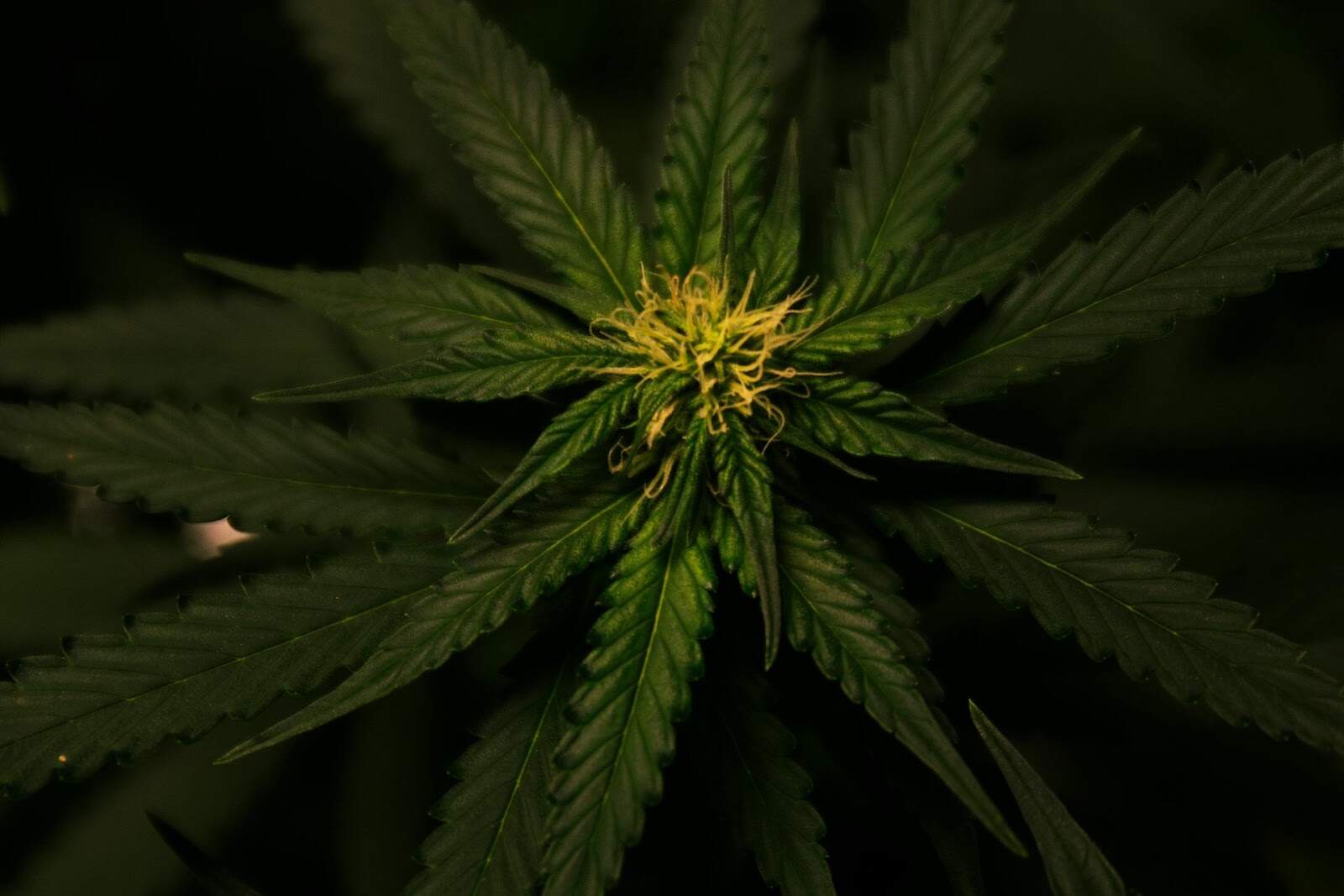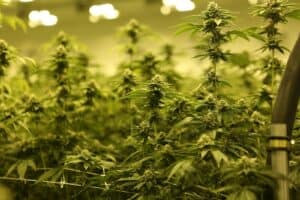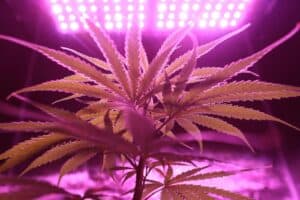Defoliation is the deliberate removal of excess leaves from a cannabis plant to promote optimal growth and increase bud yield. This technique enhances light penetration, improves air circulation, and ensures better nutrient availability, resulting in healthier plants and larger harvests. While it may seem challenging, when done correctly, defoliation plays a vital role in the successful cultivation of cannabis.
Key Takeaways
- Defoliation is the strategic removal of leaves to enhance light penetration and airflow.
- It can increase yields by optimizing the growth environment of the plant.
- Timing and technique are essential for successful defoliation.
Why Should You Defoliate Your Cannabis Plants?
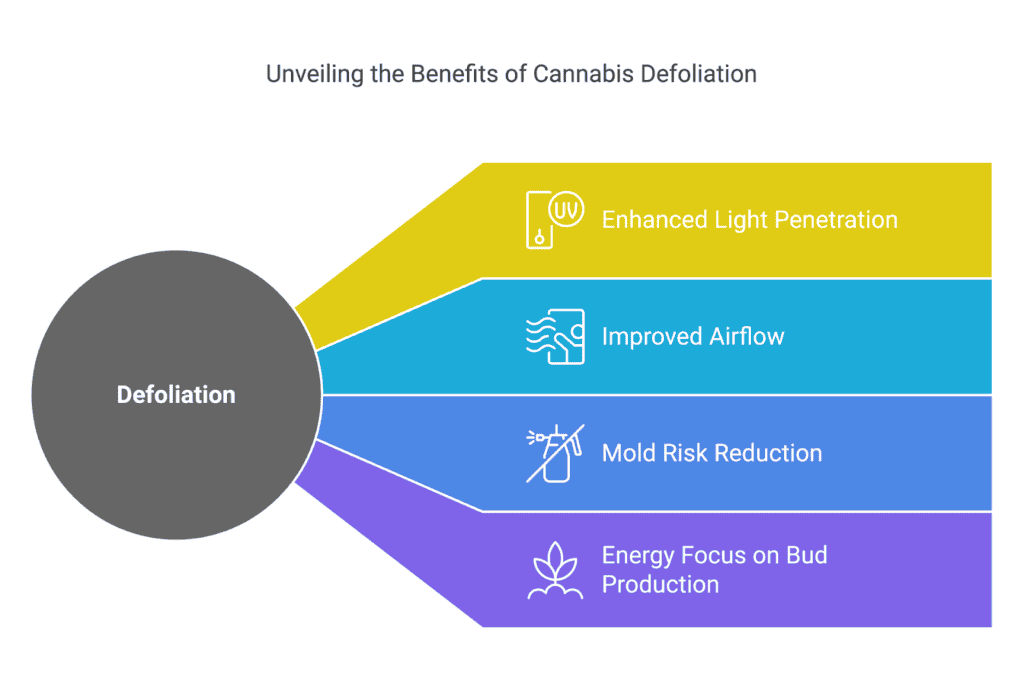
Defoliation is important in maximizing the potential of your cannabis plant. You improve light penetration and airflow by removing leaves, giving buds the conditions they need to thrive.
What Is Cannabis Defoliation?
Defoliation is the process of selectively removing fan leaves and other foliage from your cannabis plant to improve its overall growth and yield. It is usually done during the veg and flowering stages.
How Does Defoliation Work?
When you defoliate cannabis plants, you are basically channeling the plant’s energy towards bud production instead of maintaining leaves that are unnecessary. This ensures:
- Improved penetration of light to lower bud sites
- Increased air circulation, thereby reducing the chance of mold
- More nutrients going towards buds instead of leaves
Key Benefits of Defoliation
- Higher Yields: This procedure channels the energy of the plant to improve total yields.
- Healthier Plants: Good air flow prevents diseases from developing.
- Efficient Canopy Management: Trimming helps promote more uniform lighting.
A well-planned defoliation process will ensure your cannabis plants thrive without experiencing any form of unnecessary stress, which leads to better production and health. This therefore implies that your understanding of growing patterns relative to your plant may make all the difference in results.
When and How to Defoliate Cannabis Plants?
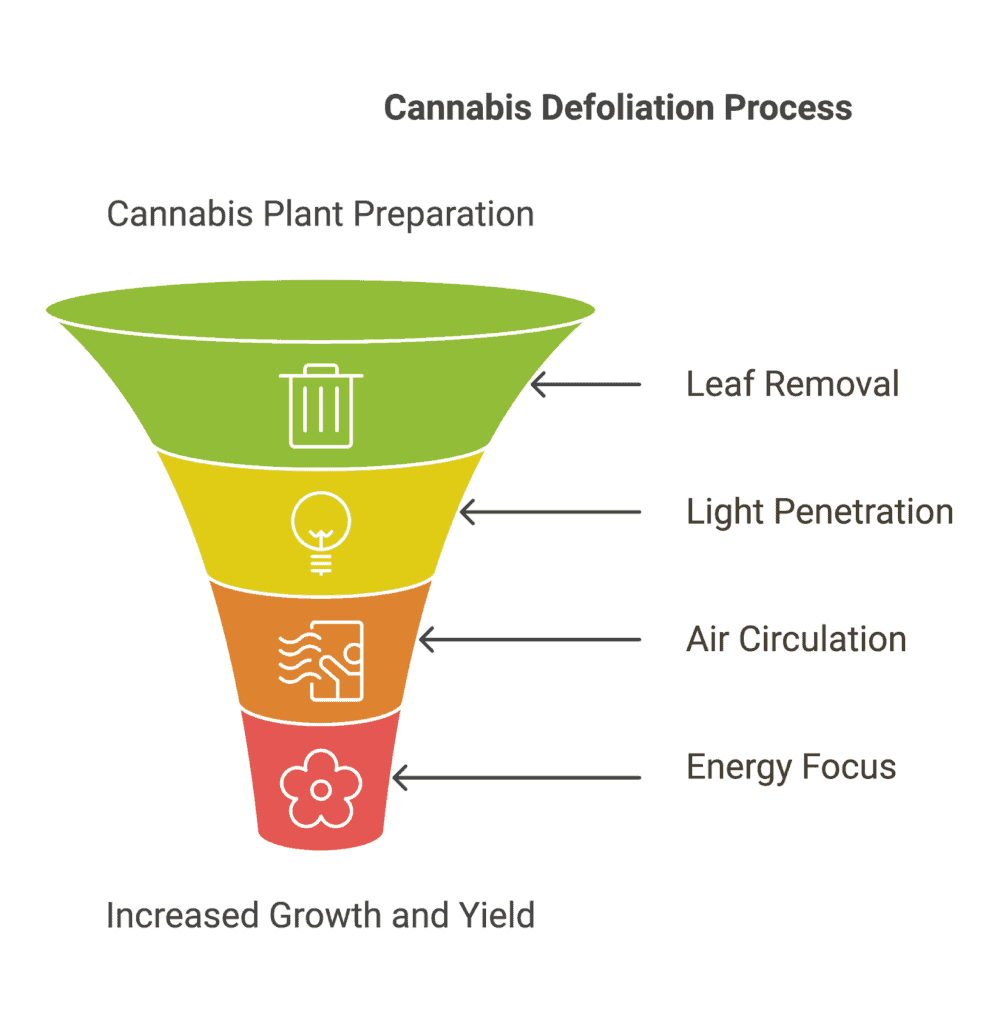
Defoliation of cannabis plants is all about timing. Knowing when and how much to take off ensures you are not doing too much.
When to Defoliate?
- Vegetative Stage: Light defoliation to prepare the plant for stronger growth.
- Flower Stage: More intensive defoliation to enhance the penetration of light and air.
First Defoliation vs. Second Defoliation
- First Defoliation: It typically occurs during the vegetative stage to give your plant shape.
- Second Defoliation: It is usually performed in the flower stage to remove unnecessary leaves and enhance bud sites.
How to Defoliate Cannabis Plants?
- Identify large fan leaves that block the light from reaching the lower parts of the plant.
- Use clean scissors or pruning shears to remove some of the leaves deliberately.
- Avoid removing too many leaves to prevent plant stress at once.
What are the advantages of cannabis defoliation?
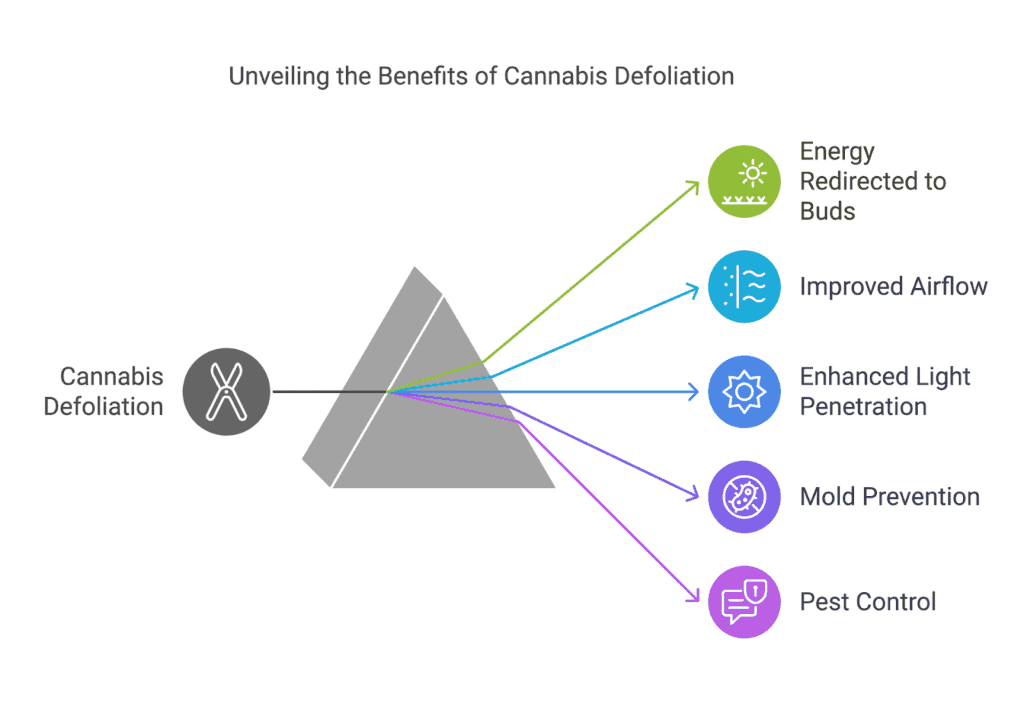
Defoliation benefits your plants in numerous ways for both indoor and outdoor growers.
Why do cannabis plants respond well to defoliation?
Cannabis plants are strong and recover rapidly from defoliation. It means the removal of extra leaves so that the plant could better utilize the available resources. Therefore, there will be:
- Better Bud Development: The buds receive direct light and nutrients.
- Improved Airflow: Low humidity prevents mold growth.
- Enhanced Light Penetration: Grow lights will have a better efficiency in an indoor grow space.
Defoliation during the Flowering Stage
This focuses the plant’s energy toward buds. Taking leaves from the bottom of the plant promotes the development of the main colas.
Pruning vs. Defoliation
Pruning cuts off branches, while defoliation removes leaves. Both are necessary training procedures, but, as with the former, direct influence on light and air comes with defoliation.
| Aspect | Defoliation | Pruning |
| Focus | Leaves | Branches |
| Purpose | Improve light/airflow | Shape plant structure |
| Timing | Veg and flowering stages | Primarily veg stage |
This is a great strategy for even light distribution and lush bud development during the flower stage on your cannabis plants.
How to Avoid Overdoing Defoliation?
Even though defoliation can help, overdefoliation stresses your plants and reduces yields. Read on and follow these best practices on how not to overdo defoliation.
Signs You’ve Overdone It
- Your plant looks weak and droopy.
- Bud development slows down.
- The leaves depict nutrient deficiencies.
Tips for Successful Defoliation
- Start with fewer leaves during your first defoliation session.
- Observe how your plant responds and adjust accordingly.
- Leave enough foliage to store nutrients and support photosynthesis.
Common Misconceptions About Defoliation
- “Defoliation Is Only for Indoor Plants:” Outdoor plants also benefit from defoliation, especially for airflow.
- “Remove All Big Fan Leaves:” Keep some for nutrient storage and plant health.
Successful cannabis growers recognize the delicate balance between removing too many leaves and maintaining the overall health of the plant to optimize the outcome. By paying attention to how your plant reacts to the process and making incremental adjustments, you’ll become a defoliation pro.
What Mistakes Do Cannabis Growers Typically Make When It Comes to Defoliation?
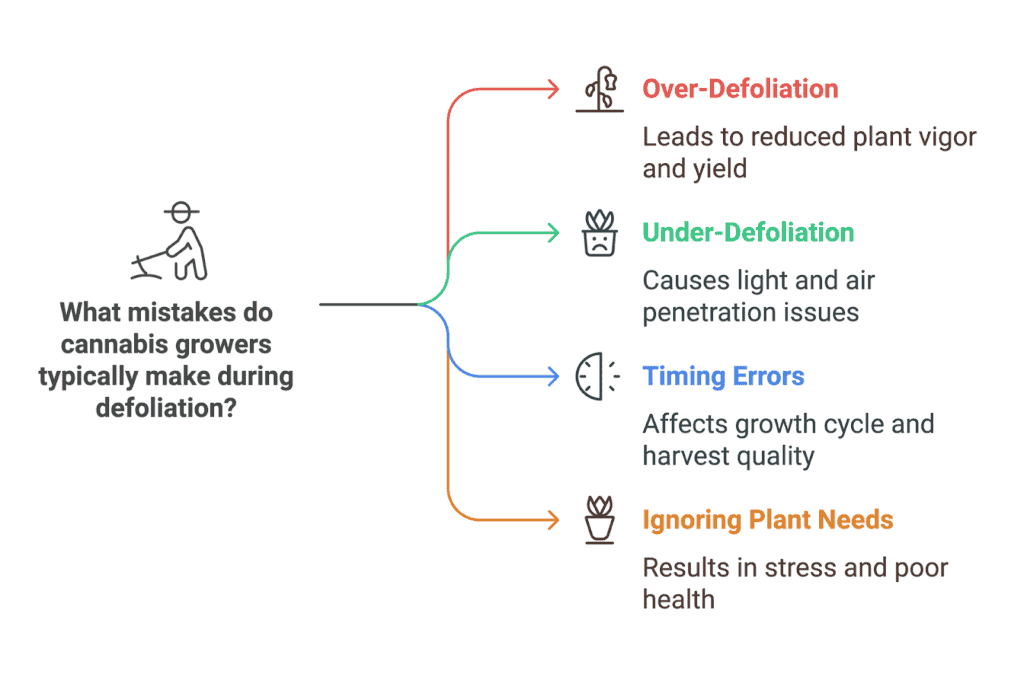
Mistakes in defoliation mean you risk your plants not thriving, which means reduced yields.
What to Avoid During Defoliation?
- Over-Defoliation: Taking out too many leaves at once may stress the plant.
- Improper Timing: Defoliating too late in the flowering stage can hinder bud growth.
- Ignoring Plant Needs: Each cannabis plant responds differently; monitor and adapt.
How to Fix Common Mistakes?
- Give your plants time to recover if you’ve over-defoliated.
- Adjust grow lights to compensate for any stress.
- Use proper tools like sharp scissors to prevent plant damage.
How to Prevent Future Mistakes?
- Learn how to defoliate correctly by starting slow and observing results.
- The focus should be on the canopy in order to provide equal light penetration and airflow.
- Observe your plant and, accordingly, modify your defoliation techniques.
Defoliation techniques that are appropriate will make your grow space become more productive and result in healthy cannabis plants. Continual observation and adaptation ensure the process does not hinder the growth of the plant in general.
Conclusion
One of the game-changing techniques through which growers can maximize yields, improve airflow, and manage canopies is defoliation. Whether you are defoliating for the first time or perfecting your technique, the main thing is knowing what your plant needs and acting accordingly. You can create the perfect environment for your buds by strategically removing leaves. With practice, defoliation becomes an invaluable tool in cannabis cultivation.
Frequently Asked Questions
How Often to Defoliate Cannabis Plants?
You should do defoliation strategically. Normally, you should do it once in the vegging stage and repeat it in flowering. Observe your plant to know whether you need to do it again.
Does Defoliation Work on All Cannabis Strains?
Normally, most strains of cannabis work well with defoliation; however, indicas are relatively sensitive. Remember to err on the side of caution and do little.
What Are the Dangers of Over-Defoliation?
Over-defoliation will stress your plant, reduce yields, and inhibit bud development. Make sure that there are enough leaves for photosynthesis and nutrient storage.

